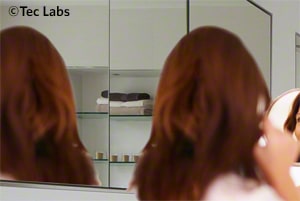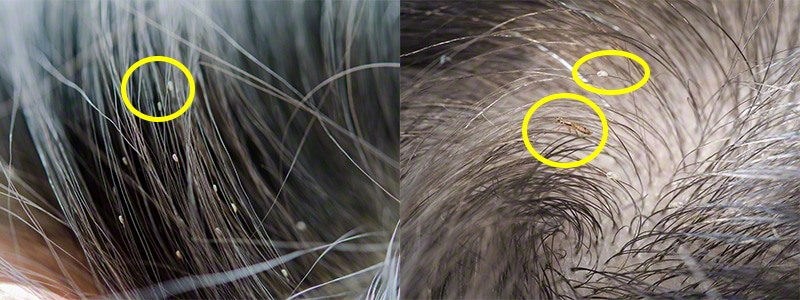How to Check Yourself for Lice

Scalp feeling itchy but you aren’t sure why? Head lice do not discriminate, so anyone can possibly be infested. However, before you go applying a lice treatment to your scalp, the first important step is to make sure you are actually dealing with head lice.
(See also How to Check Others for Head Lice)
As unpleasant as the experience can be, it is ideal to have someone help you check your own head. Asking a family member, friend or a physician to check your head is the best method. However, this may not be an option for some people, such as single parents or people living alone. So here is a second option.
- Begin with using two mirrors facing each other to check your scalp.
Head lice like to stay where it is warm so checking behind your ears and the nape of your neck is a good place to look. You are looking to find any lice crawling in the area or possible nits attached to the strands of hair. If you have dark hair it may be harder to see, as lice become darker in color after they feed. - Try separating the hair to check for any particles near the root of the hair.
It is common to mistake dandruff for nits, so try pulling on the particle and see if it dislodges easily. Nits are attached with a protein that acts like a glue to keep the eggs attached to the hair, so if it slides off easily it is more likely to be dandruff. - Another option is to use a lice comb to check your hair.
They can be purchased for less than $10 and can save you money from unnecessarily treating for head lice. Using a fine-tooth nit comb, take small sections of the hair and pull it through from root to tip. If the nit comb is difficult to get through the hair, a conditioner or detangler can be applied first. After pulling the comb through, check the teeth of the comb to see if nits or lice are on the comb. - If you don’t find lice in your hair, it could be that you have dandruff or another issue with your scalp. In this case, you should consult a physician for a diagnosis and recommended treatment.
Examples of head lice attached to hair strands:

